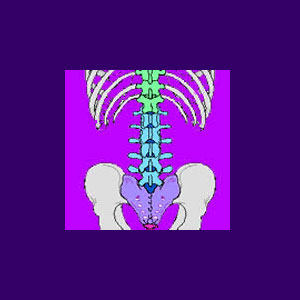
Lower back and hip pain are often experienced together, making it a common combination symptom syndrome. Pain in the hips is sometimes related to many of the usual causes of lower back pain. Back pain is a terrible experience, but when combined with pain in the hips, it has the ability to really affect a person’s mobility.
Hip problems are especially common in elderly patients. Unfortunately, many older people who develop significant hip problems never fully recover.
The scope of this article will examine the relationship between hip and back symptoms, as well as help patients to understand how these may be expressions of singular or multiple causative conditions.
Back and Hip Pain Potential Causes
There are many reasons why a patient might experience a combination of hip and back pain:
Piriformis syndrome can cause pain that might affect the lower back, buttocks, hips and legs due to muscular impingement on the sciatic nerve.
Sciatica is a common source of pain in the low back and hips. Nerves that serve the hip area can be affected when there is a neurological problem with a lumbar spinal nerve root.
Pinched nerves can occur in the lower back and affect motor or sensory functions in the hip area. These injuries will often cause pain in the back, as well as the area served by the compressed nerve.
Back muscle pain in the lumbar region can affect the hip muscles, as well. This type of injury is rarely serious and will usually resolve itself. It can be very painful though.
Arthritis can affect the spine and the hip bones. Hip socket degeneration can be very painful and debilitating. Surgery is often the only option for severe hip joint deterioration.
Hip bursitis is a common condition that comes from aging and use. The bursa are fluid filled sacs that allow for smooth joint motion. Sometimes these sacs can become inflamed and cause pain. This condition is about as common as degenerative disc disease and spinal arthritis. These conditions are not always painful and exist asymptomatically in many people.
Sacroiliac joint pain syndromes often seem to reside deep inside the anatomy of the hip. In fact, a great many SI joint concerns are originally misdiagnosed as being located in the lumbar spine or the hip joint before their true nature is discovered.
Fractures are very common in older patients. A simple fall can bring on a painful and debilitating condition that may last for the rest of the patient’s life. Osteoporosis makes a person more likely to develop a fracture in the hip or any other area.
Warning for Back and Hip Pain
Some types of hip pain can pose serious health concerns. Aseptic necrosis, also called osteonecrosis, is a condition that can cause the actual cells in the hip bones to die. This condition can cause the collapse of the entire hip joint. Aseptic necrosis is fairly common in the hip joint, especially as a person ages. Patients should get a thorough check up by their doctor to rule out this condition.
Of course, the possibility of severe nerve compression issues in the lumbar spine can also be very significant health threats. Cauda equina syndrome and central spinal stenosis can be debilitating and may become medical emergencies.
Guidance on Hip and Back Pain
The lower back and hips work together to support and stabilize our posture. It is common for pain that affects one area to also have a direct or sympathetic effect on the other. Proper diagnosis is crucial for successful treatment. Make sure to inform your doctor of any changes in your normal back pain and tell them if any symptoms spread to the hips.
It is vital to understand that many of the structural diagnoses in the hip can also act as scapegoats for pain, just like spinal sources can. Arthritic deterioration is commonplace, but rarely seriously symptomatic. If you have been diagnosed with pain generated by normal and expected degeneration of the hip or low back, it may be wise to evaluate the condition with a new doctor. Sometimes a second opinion can put you back on course towards successful treatment rather than wasting time treating a coincidental structural issue.





